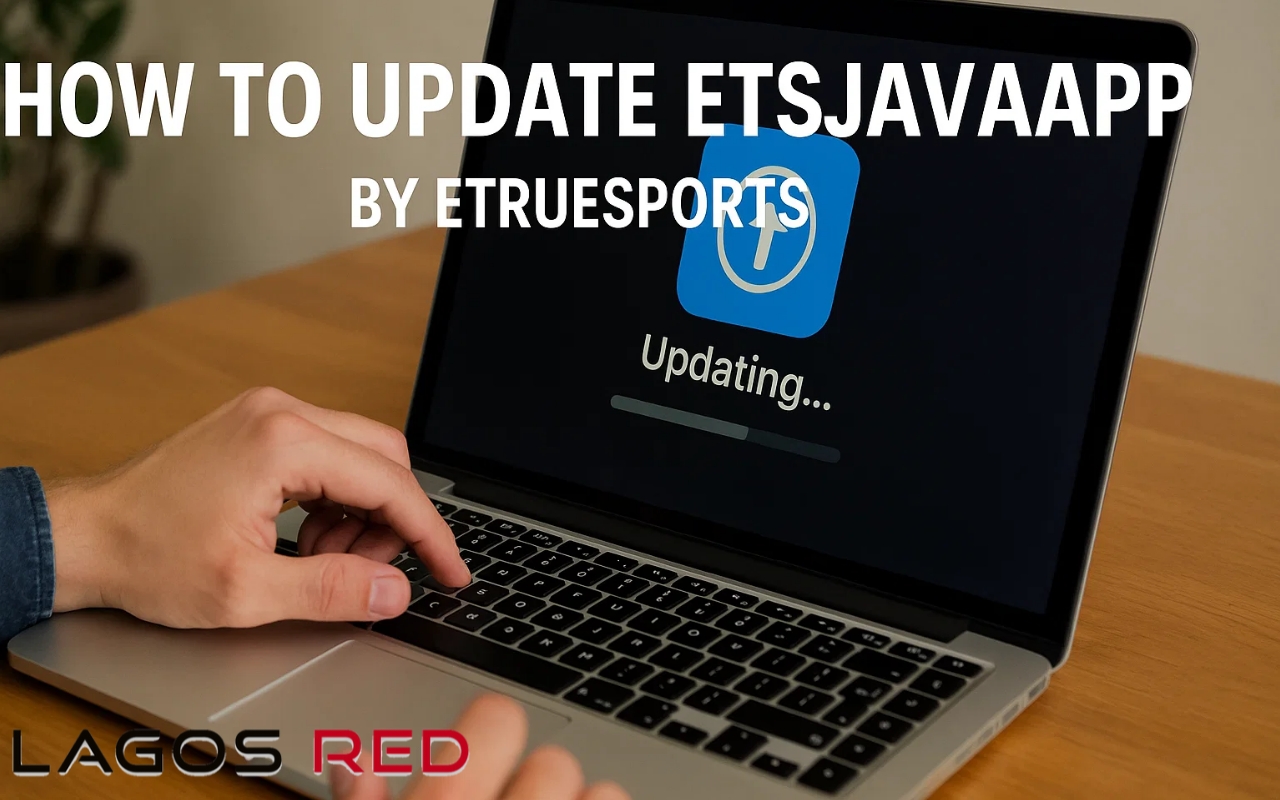Introduction
Keeping ETSJavaApp updated is more than clicking “Update” now and then. Behind each new version, developers work hard to patch bugs, close security holes, and introduce new features users requested. Over time, if you skip updates, you risk running into crashes, data mismatches, or outdated feeds. In my personal experience using sports analytics tools, an update once fixed a bug that was causing match times to display incorrectly — which saved me from misreading live data in a big match.
Moreover, the app’s performance generally improves via optimization in updates: smoother animations, fewer lags, faster loading. These invisible improvements can make a difference especially if your phone or device is older or has limited memory. Also, staying on the latest version ensures compatibility when the backend (servers) change — sometimes new features or API updates break compatibility with older app versions.
Finally, updating is a safety measure. As vulnerabilities emerge, developers release patches; delaying those patches can expose your device or data. So, treating updates not as optional chores but as regular maintenance can keep your ETSJavaApp experience stable, secure, and full-featured.
Check Your Current Version Before Updating
Before you proceed, find out which version of ETSJavaApp is installed on your device. This is important because knowing your version helps you see if an update is needed, and in case of any problems, you can report exactly which version you had. On Android, open the app → go to Settings → About or App info. On iOS, go via the app’s settings or via the App Store listing and see “Version”.
Once you have the version number, jot it down (for example, “v2.3.14, build 2025-09-20”). This becomes your benchmark. If the version matches with what’s listed in the update log or app store, you’ll know you already have the latest. If it’s lower, you know you truly need to update. Having that record also helps if something goes wrong — support teams will often ask, “Which version were you running?” If you contact them, supplying your version helps.
Also, check if there is a release date or build date displayed. Sometimes developers release updates gradually (staged rollout), so your store might not show the update yet — but if your version is already the latest, you don’t have to force anything. Checking version first prevents unnecessary installs or confusion.
Back Up Your App Data and Settings
Backing up is something many skip, but trust me — it saves pain. Before making any changes, export your settings, preferences, custom dashboards, and any data the app allows you to back up. Some apps let you export a file (JSON, XML, or proprietary backup). Others auto-sync to cloud services like Google Drive or iCloud. Use whatever method the app gives you. I once lost nearly a month’s worth of filters and custom views by updating without backing up — never repeating that mistake.
After creating a backup, verify the backup file. Open it (if readable) or check that size/date looks correct. For example, if your app says backup file is “settings_backup_2025-10-04.json, 150 KB”, make sure “2025-10-04” is today — not some older copy. Store a copy on your local device or PC, not just in cloud, so you have redundancy.
Finally, keep track of key credentials (username, tokens, pairing codes). Sometimes updates reset logins or permissions. Having your credentials to log back in ensures you don’t get locked out. By doing these three steps — backup, validate, store — you greatly reduce the chance of losing your setup.
Choose the Correct Update Source (Official Only)
When it’s time to update, always use trusted channels. For mobile users, the safest options are Google Play Store (Android) or Apple App Store (iOS). These app stores verify the publisher signature and ensure the app wasn’t tampered with. If the app is for desktop or requires manual installation, you should only download from the official eTrueSports website or the official release page (often linked within the app or official documentation).
Avoid third-party sites or mirror repositories that look tempting. Such sites may host repackaged or malicious versions. Always double-check the domain (e.g. “etruesports.com” or a subdomain belonging to them). If the official site publishes checksums (MD5, SHA-256) alongside the download, use them to ensure the file you get matches exactly what the developers signed.
As a rule of thumb: 1) Trust only official stores or developer’s website; 2) Cross-check domain and signatures; 3) Never click random update links on social media or emails. Doing so protects you from malware and ensures your update is authentic.
Update on Android Devices
Updating ETSJavaApp on Android is usually straightforward if you use the Google Play Store. First, open the Play Store, tap the menu (three lines or your profile icon), then select “My apps & games”. Scroll through the list until you find ETSJavaApp — if there’s an Update button next to it, tap it. Wait for download, installation, then open the app.
If you don’t see an Update button, it may mean: a) your version is already the latest; b) the update is not yet rolled out to your region; or c) the Play Store cache is stale. In that case, try pulling down to refresh or clear the Play Store cache (Settings → Apps → Google Play Store → Storage → Clear cache). Restarting your device sometimes helps too.
Once installed, always restart the app (and optionally reboot the device) before using it heavily. That ensures all new libraries, APIs, and modules load fresh. In my experience, sometimes the “update” only becomes fully functional after a clean start, so don’t skip that.
Update on iOS Devices (iPhone / iPad)
Updating on iOS is similarly simple. Open the App Store, tap your profile icon in the upper right, and scroll down to Available Updates. If you see ETSJavaApp listed, tap Update. Wait for the download and installation to finish. When done, open the app and confirm the update worked.
If the app doesn’t show under “Available Updates,” try pulling down on the update list to refresh. Also, check if your iOS version is up to date — sometimes newer app versions require a minimum iOS version, and the update might be hidden until your system version meets it. If your device is old and cannot update, you may remain stuck on an older app version unless the developer maintains backward compatibility.
After the update, test basic features like login, live feed, and settings. If something seems off (icons missing or data not showing), force close and reopen the app. Sometimes iOS needs a fresh load after version changes.
Manual / Desktop Installation (When Store Updates Are Not Possible)
There are times when you must update ETSJavaApp manually, e.g. desktop versions, beta builds, or regional restrictions. In that scenario, go to the official eTrueSports website and locate the Downloads or Releases section. Make sure you are using the correct build for your OS (Windows, macOS, Linux) or the correct version (stable vs beta).
Download the installer or package file (e.g. .exe, .dmg, .zip). If they provide a checksum (SHA-256, MD5), compute the checksum on your downloaded file and compare — mismatch means corrupted or tampered file, so don’t install it. Then run the installer and follow its prompts. On systems like Windows, you might need Administrator privileges.
Once installed, open the app and confirm the version in Settings → About. Next, import your backup or restore settings. Finally, test your main workflows (live scores, analytics, notification). If something fails, you can uninstall and revert to a previous stable version from your backup — but only do that if absolutely necessary.
After Update: Confirm, Test & Troubleshoot
Right after updating, take time to confirm everything works. First, open ETSJavaApp and go to Settings → About to verify the new version number matches what the developers announced. If not, the update may have failed partially. Second, test your core functions: live score feed, match details, notifications, settings. If any of them misbehave, that’s a red flag.
If parts of the app crash or freeze, try force closing and restarting. If the problem persists, clear the app cache or data (but only after ensuring your backup is safe). On Android, go to Settings → Apps → ETSJavaApp → Storage → Clear cache or data. On iOS, uninstall and reinstall from App Store, then restore backup. Many times, installation conflicts or leftover files from the previous version cause trouble — a clean reinstall often fixes that.
If all else fails, gather as much information as possible: version you had, version you updated to, device model, OS version, screenshots, error messages. Then contact eTrueSports support via their official support channel. Give them the details — that helps them reproduce and fix the issue faster. Developers usually appreciate logs and reproduction steps.



